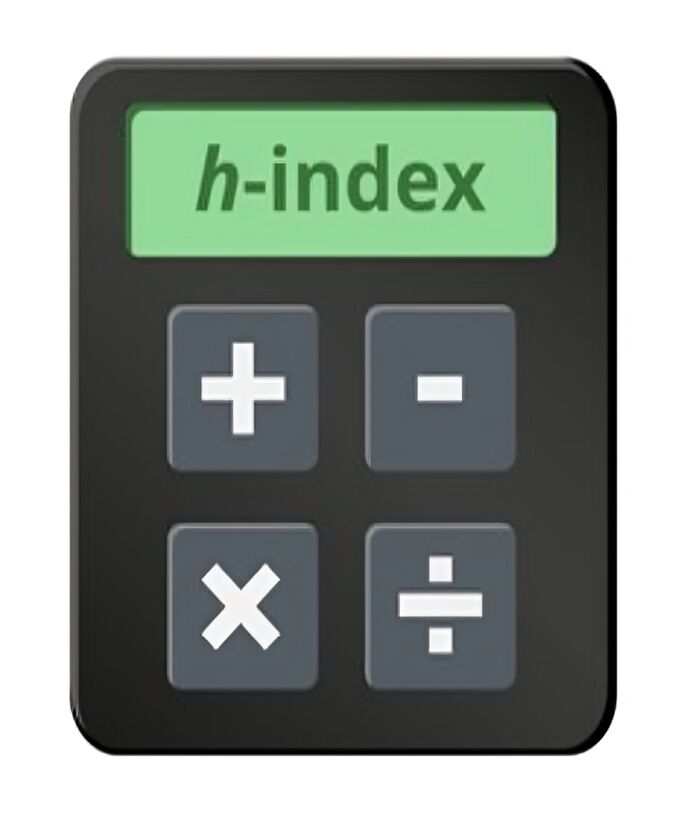مقارنه مؤشر H فی Google Scholar و Scopus


یُعد مؤشر H من المقاییس الشائعه التی تُستخدم لقیاس إنتاجیه وتأثیر الأعمال المنشوره للباحث. فی Google Scholar، یتم حساب مؤشر H بناءً على عدد المنشورات وعدد الاستشهادات التی تلقتها تلک المنشورات. وهو یحدد أکبر عدد h بحیث أن للباحث h منشورات، وقد حصل کل منها على h استشهادات على الأقل.

بالمثل، یقوم Scopus، وهو قاعده بیانات استشهادیه مشهوره، بحساب مؤشر H عن طریق النظر فی عدد المنشورات وعدد الاستشهادات التی تلقتها تلک المنشورات. ویتم تحدید أعلى قیمه h بحیث أن لدى الباحث h منشورات، وقد حصل کل منها على h استشهادات على الأقل.

أحد أبرز الفروقات هو نطاق التغطیه. یتمیز Google Scholar بتغطیه أوسع تشمل المقالات، الأطروحات، أوراق المؤتمرات، المسودات الأولیه (preprints)، ومستودعات المؤسسات. بینما یرکز Scopus بشکل رئیسی على المجلات المحکمه، ووقائع المؤتمرات، وبراءات الاختراع.
یتضمن Google Scholar مصادر غیر محکمه فی فهرسته، مما یؤدی إلى زیاده عدد المنشورات والاستشهادات، وقد یُؤدی ذلک إلى تضخیم مؤشر H مقارنه بـ Scopus، الذی یرکز على المصادر المحکمه فقط.
من الفروقات البارزه أیضًا هی معالجه الاستشهادات الذاتیه. یقوم Google Scholar بشمل الاستشهادات الذاتیه (أی من منشورات الباحث نفسه)، بینما یوفر Scopus خیارًا لاستثناء الاستشهادات الذاتیه، مما یسمح بتقییم التأثیر الحقیقی بدون تأثیر الذات.
تختلف مصادر بیانات الاستشهاد بین القاعدتین. یعتمد Google Scholar على قاعده بیاناته التی تتضمن استشهادات من مصادر متنوعه، فی حین یستخدم Scopus نظام فهرسه استشهادات خاضع لعملیات مراقبه جوده صارمه، مما یجعله أکثر دقه وتنظیمًا.
یُقدم Google Scholar عده مقاییس استشهادیه مثل مؤشر H ومؤشر i10 (عدد المنشورات التی حصلت على 10 استشهادات أو أکثر). أما Scopus فیقدم مؤشر H إضافه إلى مقاییس مثل SJR (ترتیب المجلات SCImago) وSNIP (تأثیر المصدر المعدل حسب الحقل)، والتی توفر رؤى دقیقه حول تأثیر المجلات والمقالات.
"فیما یلی جدول مُلخّص یُقارن بین الفروقات الرئیسیه فی مؤشر H بین Google Scholar و Scopus."
الفروقات الرئیسیه | Google Scholar (جوجل سکولار) | Scopus (سکوبس) |
|---|---|---|
نطاق التغطیه | تغطیه أوسع | یرکّز على المجلات المحکمه، مؤتمرات علمیه، وبراءات الاختراع |
تضمین المصادر غیر المحکمه | یشمل المصادر غیر المحکمه | یشمل فی الغالب المصادر المحکمه فقط |
بیانات الاستشهادات | یعتمد على قاعده بیاناته الخاصه | یستخدم نظام فهرسه خاص مع بیانات مُنقّحه |
الاستشهادات الذاتیه | یشمل الاستشهادات الذاتیه | یوفر خیار استبعاد الاستشهادات الذاتیه |
توفر المقاییس | یقدم مقاییس استشهاد مختلفه (مثل H-index و i10-index) | یوفر H-index، وSJR، وSNIP لقیاس تأثیر المقالات والمجلات |
عند مقارنه قیمه مؤشر H بین Google Scholar وScopus، یجب الانتباه إلى الفروقات فی التغطیه، ومصادر الاستشهادات، ومعالجه الاستشهادات الذاتیه. من بین الاعتبارات المهمه:
قد تختلف التغطیه وأنماط الاستشهاد من تخصص لآخر، لذلک یجب أن یختار الباحث القاعده التی تغطی مصادر تخصصه بدقه.
قد تکون لدى الجامعات أو الجهات المموله تفضیلات محدده أو متطلبات لاستخدام قواعد بیانات معینه. یجب على الباحث مراجعه السیاسات الرسمیه للتأکد من الامتثال لها.
إذا أراد الباحث مقارنه مؤشر H بمرور الوقت أو مع باحثین آخرین، من الضروری أن یکون ثابتًا فی استخدام نفس قاعده البیانات، حیث قد یؤدی التبدیل إلى نتائج متفاوته.
یجب تفسیر مؤشر H فی ضوء مجال الباحث، ومرحلته المهنیه، وممارسات الاستشهاد فی التخصص. من المهم أن تکون المقارنات مدروسه وضمن سیاق دقیق.
دعنا نساعدک فی اختیار المجله المناسبه لبحثک!

فی أکادیمیه سیتا، نعلم أن اختیار المجله العلمیه المناسبه هو خطوه حاسمه فی عملیه النشر الأکادیمی. لهذا السبب، نوفر لک خدمه مخصصه لمساعدتک فی تحدید المجلات المثالیه لنشر ورقتک البحثیه.
لدینا قائمه شامله من المجلات العلمیه المفهرسه فی قواعد البیانات العالمیه مثل:
Scopus
Web of Science
PubMed
کل ما علیک فعله هو إرسال اسم القسم الأکادیمی ومجال البحث الخاص بک، وسیتولى فریقنا إعداد قائمه دقیقه من المجلات المناسبه لنوع دراستک وشروطک العلمیه.
إذا کان لدیک أی أسئله، استفسارات، أو ترغب فی معرفه المزید عن خدماتنا، فلا تتردد فی التواصل معنا. فریقنا المخصص مستعد لمساعدتک.